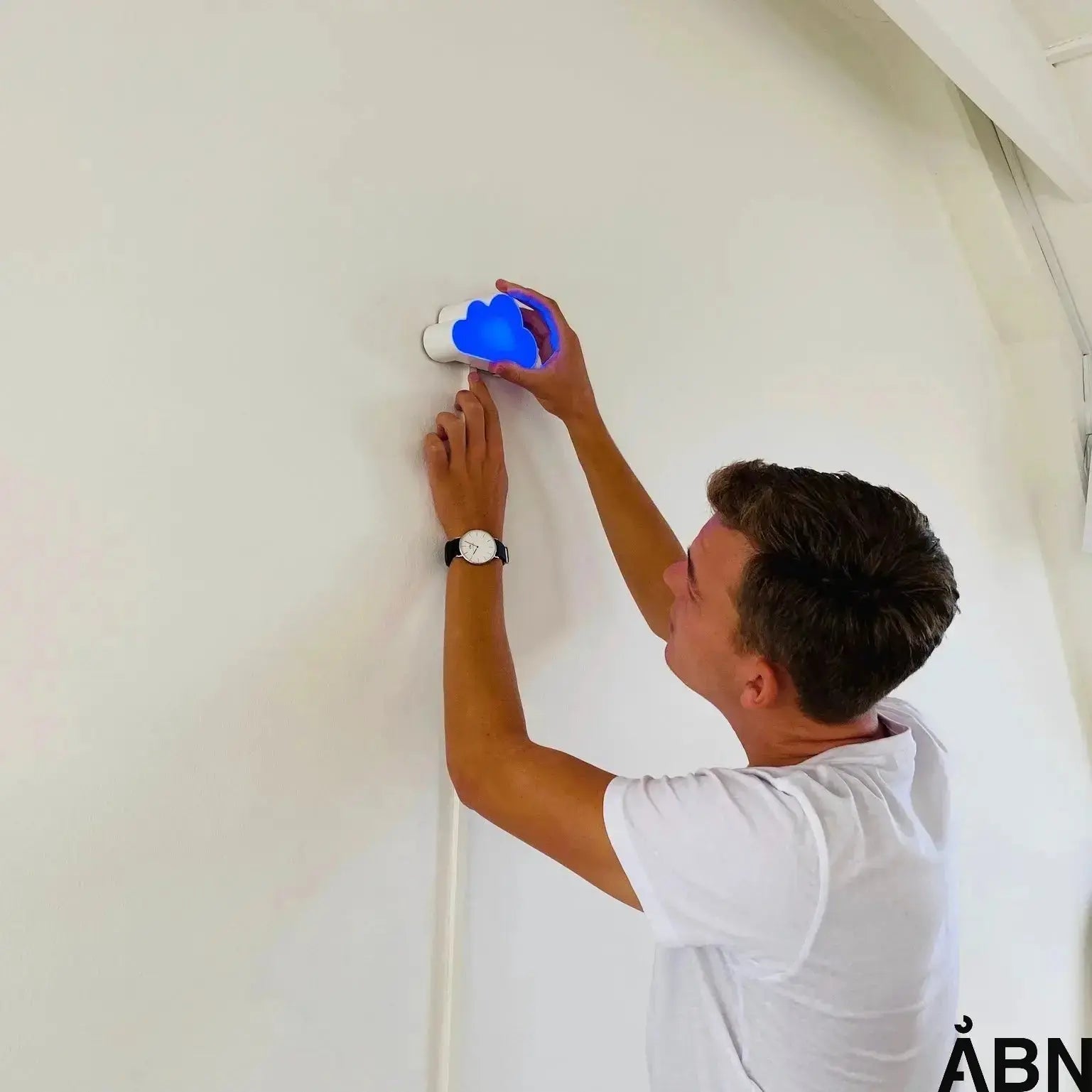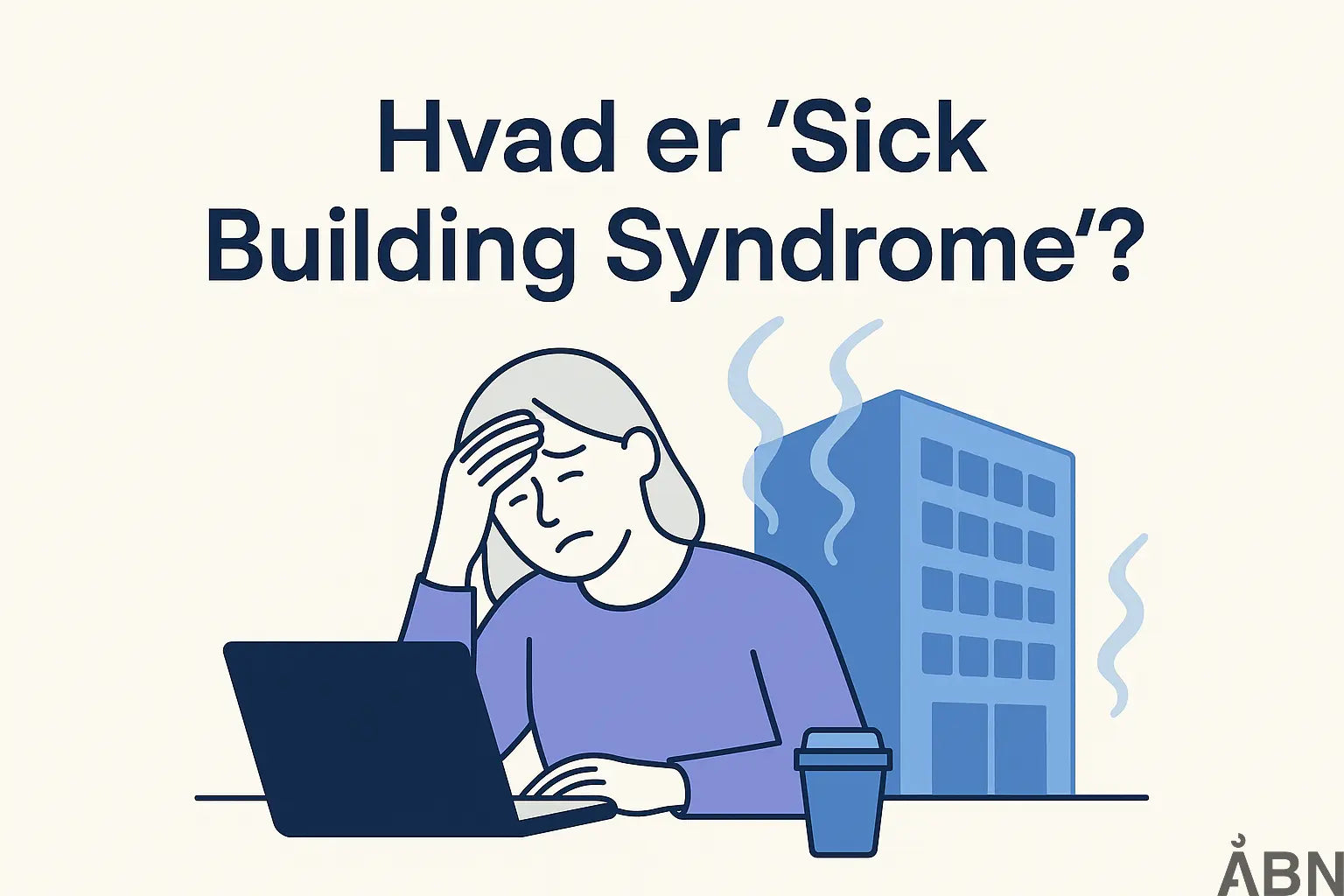Imagine you walk into a building. It could be your school, your office or your home and before long you start to feel tired, have a headache or dry eyes. When you leave the building, the symptoms disappear. Does this sound familiar? Then you may have experienced Sick Building Syndrome (SBS).
An invisible enemy in modern construction
Sick Building Syndrome , or in Danish "sick buildings", covers a number of symptoms that occur when people stay in buildings with a poor indoor climate. This can be due to too high CO₂, poor ventilation, chemicals from building materials, dust, mold or insufficient cleaning.
According to the WHO, SBS has been a known problem since the 1980s, especially in office buildings and public buildings with mechanical ventilation and tight climate controls. Today, we know that the problem is much broader – and can have major consequences for both health and performance.
Typical symptoms of SBS
SBS most often manifests itself as:
-
Headache or dizziness
-
Dry eyes, nose, or throat
-
Fatigue or difficulty concentrating
-
Skin irritation or itching
-
Nausea or malaise
These symptoms typically disappear when you leave the building – which is why it is also called a reversible indoor climate problem .
Why does SBS occur?
SBS is the result of several factors that combine to create an imbalance in the indoor environment. The most common causes include:
-
Insufficient ventilation : Many buildings do not have sufficient air exchange, leading to the accumulation of CO₂ and pollutants.
-
Chemical emissions : Paint, furniture, carpets and cleaning products emit volatile organic compounds (VOCs), which can cause discomfort and allergic reactions.
-
Poor temperature and humidity control : Excessively high temperatures or dry air can worsen discomfort and reduce comfort.
-
Noise and light : Acoustics and lighting also play a role in the overall indoor climate experience.
Who is affected – and what are the consequences?
SBS can affect anyone - but especially children and adults who spend a long time in the same indoor environment, such as in schools, daycare centers and offices. Studies have shown that poor air quality can reduce children's learning by up to 10%, and that employees in poor indoor environments perform up to 61% worse on cognitive tasks.
What measurements can I have done to detect SBS in my office?
To detect Sick Building Syndrome in an office, several different measurements of the indoor climate can be taken, which can indicate possible problems with air quality and other environmental factors:
-
CO2 measurements : Monitoring CO2 levels is particularly important as high CO2 concentrations (>1000 ppm) in office environments indicate poor ventilation and accumulation of other airborne pollutants, which can trigger SBS symptoms. CO2 is often measured with infrared (NDIR) sensors such as those in ÅBN's multisensor, which can provide continuous, accurate readings.
-
Temperature measurements : Excessively high or fluctuating temperatures can worsen the symptoms of SBS. Measurements help ensure a stable and comfortable temperature environment.
-
Humidity measurements : Relative humidity should be monitored to prevent dry air or moisture, which can promote mold and dust mites that contribute to SBS.
-
Measurement of other air quality parameters : Including chemical pollutants (VOCs), particles (dust), and possibly biological pollutant sources such as mold.
-
Ventilation efficiency measurements : For example, airflow analyses to ensure that there is sufficient air exchange in the premises.
By combining these measurements, you can get a good overview of the conditions that can lead to SBS, and thus take initiatives to improve the indoor climate and prevent symptoms in employees.
Sensor-based solutions, such as the aforementioned multi-sensors from ÅBN , can measure several of these parameters simultaneously and are used for continuous monitoring.
Our solution, SKYEN, visualizes the indoor climate with simple color signals and engages users to take action – for example, by opening the window, adjusting the ventilation or changing behavior.
Combined with our digital dashboards and onboarding processes, we create measurable change in schools, municipalities and companies.
A good indoor climate is not a luxury – it is a necessity
A healthy indoor climate is not just about comfort – it is about health, well-being, learning and productivity. Therefore, indoor climate should not be hidden behind technical terms and closed doors. It needs to be brought to light – and that is exactly what ÅBN is working for.
📬 Do you suspect that your building is suffering from SBS? Contact us at hello@aabn.io - and we will help you find your way to a healthier indoor climate.









